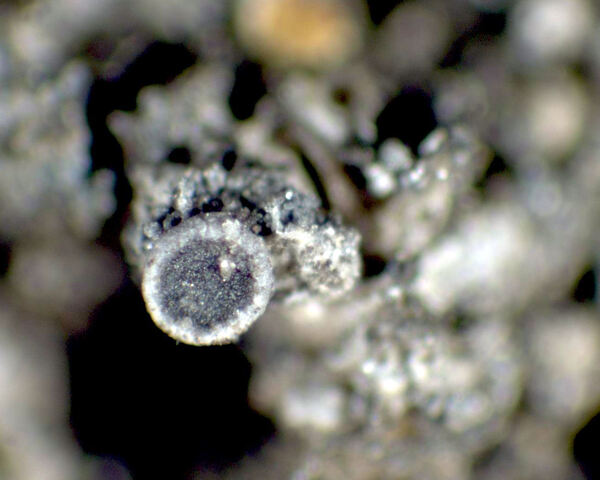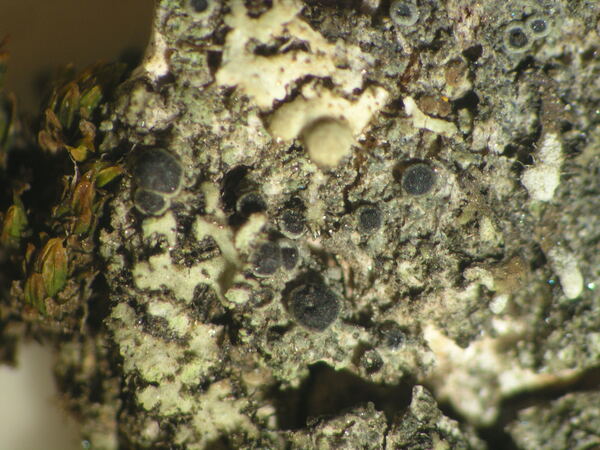Rinodina colobina (Ach.) Th. Fr.
Lichenogr. Scand., 1: 205, 1871. Basionym: Lecanora colobina Ach. - Lichenogr. Univ.: 358, 1810.
Synonyms: Rinodina leprosa A. Massal.; Rinodina virella (Ach.) Körb.
Distribution: N - Frl (Ropin & Mayrhofer 1995), Ven (Massalongo Lich. Ital. 293, 294 p.p.: Ropin & Mayrhofer 1995), TAA (Ropin & Mayrhofer 1995, Nascimbene & al. 2007b), Lomb (Anzi Lich. Lang. 305: Ropin & Mayrhofer 1995), Piem (Rabenhorst Lich. Eur. 965: Ropin & Mayrhofer 1995, Isocrono & al. 2003), Lig (Rabenhorst Lich. Eur. 305 and ECI 190: Ropin & Mayrhofer 1995). C - Umb (Ravera 1998, 1999, Ravera & al. 2006), Abr (Nimis & Tretiach 1999, Brackel 2015), Sar (Ropin & Mayrhofer 1995, Rizzi & al. 2011, Di Nuzzo & al. 2022). S - Camp (Aprile & al. 2003b), Pugl (Nimis & Tretiach 1999), Bas (Ropin & Mayrhofer 1995, Puntillo 1996), Cal (Ropin & Mayrhofer 1995), Si.
Description: Thallus crustose, thinly episubstratic, dark grey to blue-black, continuous or rimose-areolate, often granulose-blastidiate. Apothecia lecanorine, sessile, 0.4-0.7 mm across, with a black, flat to convex disc and a prominent, persistent, smooth to rarely granulose thalline margin. Thalline exciple corticate, the cortex paraplectenchymatous, up to 30 μm thick, of 5-10 μm wide cells I-, K+ violet; epithecium blue-grey to bluish-black, K+ violet; hymenium colourless, 70-85(-100) μm high; paraphyses simple to sparingly branched in upper part, the apical cell strongly swollen and 3-5 μm wide, the pigment located among the tips of paraphyses; hypothecium colourless to pale yellow, to 70 μm high. Asci 8-spored, clavate, the K/I+ blue tholus penetrated by a faintly amyloid apical cushion with parallel or diverging flanks, the wall K/I-, surrounded by a K/I+ blue outer layer, Lecanora-type. Ascospores 1-septate, pale brown to almost colourless when young, (15-)17-20(-22) x 7-9(-10) μm, intermediate between the Pachysporaria- Physcia- and Mischoblastia-types, the wall smooth, without a well-developed torus, the lumina hour-glass shaped, the ontogeny of type A (apical wall thickening after the early septum formation). Photobiont chlorococcoid. Spot tests: thallus K+ violet, C+ violet, P-, N+ violet. Chemistry: Sedifolia-grey pigment in thallus and epithecium.Note: a mild-temperate to Mediterranean lichen found on dust-impregnated bark of isolated trees, especially Populus, Fraxinus, Juglans and Ulmus, often on the basal parts of trunks; certainly declining, and presently extinct in several regions, probably due to the disappearance of unpaved roads during this century. It is included in the Italian red list of epiphytic lichens as “Near-threatened” (Nascimbene & al. 2013c).
Growth form: Crustose
Substrata: bark
Photobiont: green algae other than Trentepohlia
Reproductive strategy: mainly sexual
Commonnes-rarity: (info)
Alpine belt: absent
Subalpine belt: absent
Oromediterranean belt: absent
Montane belt: extremely rare
Submediterranean belt: extremely rare
Padanian area: absent
Humid submediterranean belt: extremely rare
Humid mediterranean belt: extremely rare
Dry mediterranean belt: absent
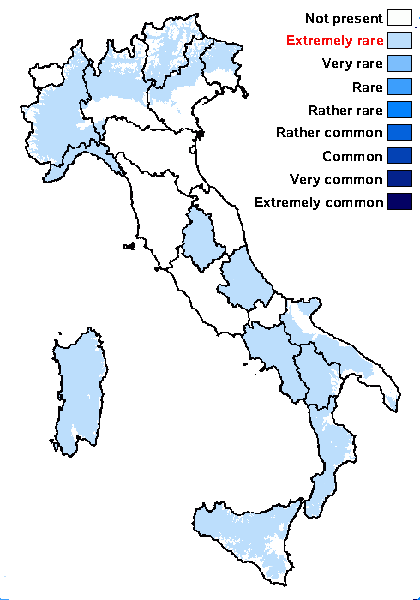
Predictive model
Herbarium samples
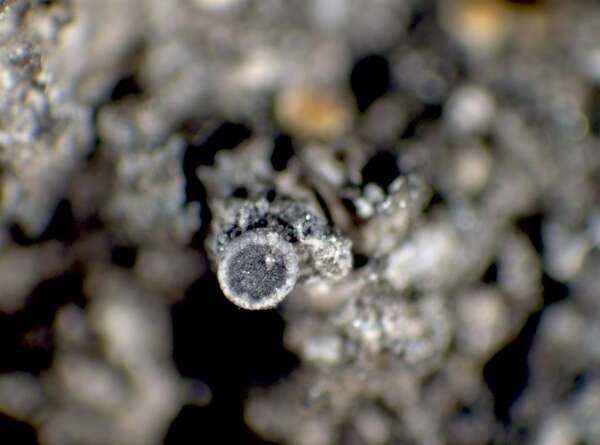

P.L. Nimis; Owner: Department of Life Sciences, University of Trieste
Herbarium: TSB (19737)
2001/11/29
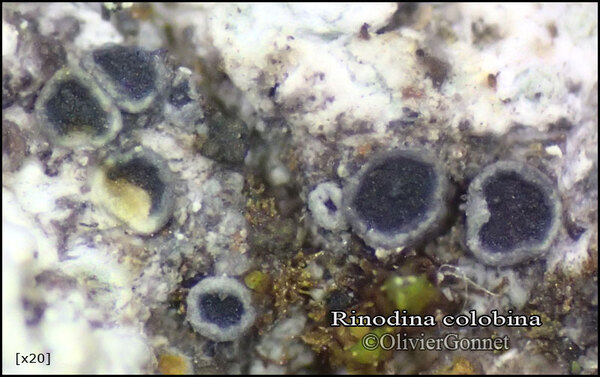
Courtesy Danièle et Olivier Gonnet - Source: https://www.afl-lichenologie.fr/Photos_AFL/Photos_AFL_R/Textes_R/Rinodina_colobina.htm
France, 30/9/2015 - Villard-de-Lans - Combe chaulange - Isère
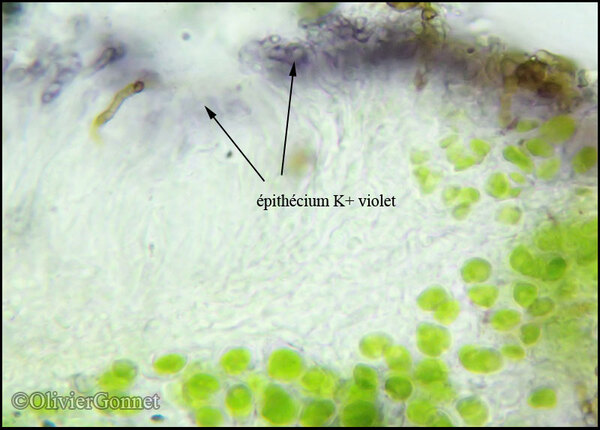
Courtesy Danièle et Olivier Gonnet - Source: https://www.afl-lichenologie.fr/Photos_AFL/Photos_AFL_R/Textes_R/Rinodina_colobina.htm
France, 30/9/2015 - Villard-de-Lans - Combe chaulange - Isère
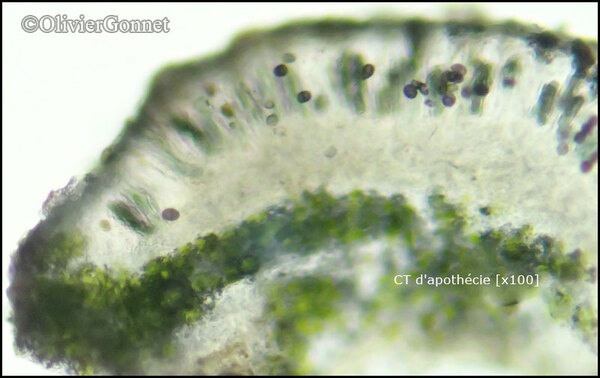
Courtesy Danièle et Olivier Gonnet - Source: https://www.afl-lichenologie.fr/Photos_AFL/Photos_AFL_R/Textes_R/Rinodina_colobina.htm
France, 30/9/2015 - Villard-de-Lans - Combe chaulange - Isère
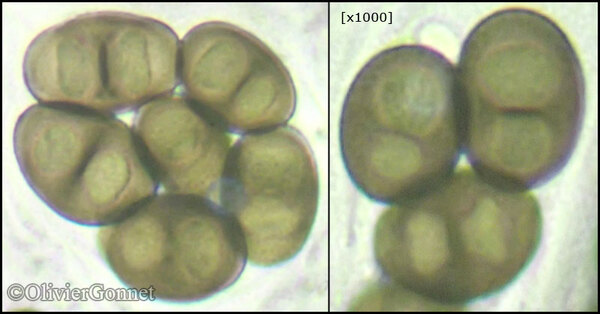
Courtesy Danièle et Olivier Gonnet - Source: https://www.afl-lichenologie.fr/Photos_AFL/Photos_AFL_R/Textes_R/Rinodina_colobina.htm
France, 30/9/2015 - Villard-de-Lans - Combe chaulange - Isère
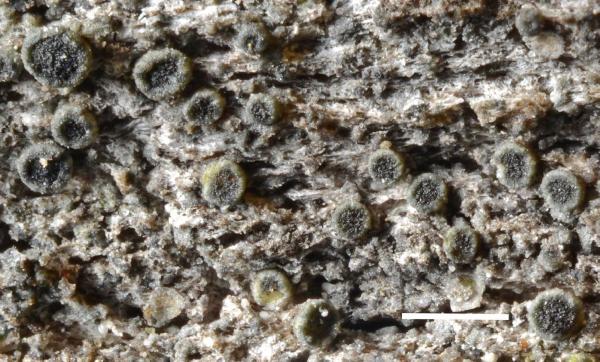
Source: Arup, U. & Ligander, I. 2023. Phylogeny, ecology and morphology of the two corticolous lichen species Rinodina colobina and R. pityrea in the Nordic countries. Graphis Scripta 35 (8): 126–143. Oslo. ISSN 2002- 4495. - CC BY-4.0
Rinodina colobina from Dalarna, Sweden. The apothecia have a smooth, round, light grey thalline
exciple, no visible proper exciple, a poorly developed thallus and very few blastidia. Thor 21 Oct. 2021
(UPS).
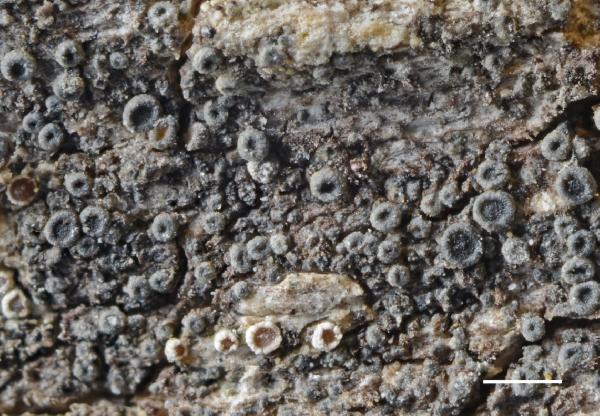
Source: Arup, U. & Ligander, I. 2023. Phylogeny, ecology and morphology of the two corticolous lichen species Rinodina colobina and R. pityrea in the Nordic countries. Graphis Scripta 35 (8): 126–143. Oslo. ISSN 2002- 4495. - CC BY-4.0
Close-up of Rinodina colobina. The round, smooth thalline exciple can be seen as well as the
scattered areoles with very few blastidia. Arup L08098 (LD).
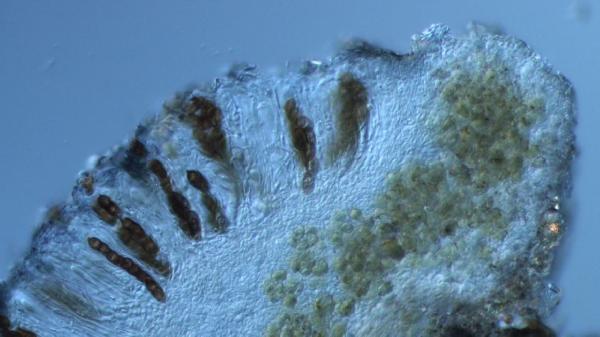
Source: Arup, U. & Ligander, I. 2023. Phylogeny, ecology and morphology of the two corticolous lichen species Rinodina colobina and R. pityrea in the Nordic countries. Graphis Scripta 35 (8): 126–143. Oslo. ISSN 2002- 4495. - CC BY-4.0
Cross-section of the apothecium of Rinodina colobina. The thick thalline margin is well developed
and dominate whereas the proper margin is very poorly developed with paraphyses lined up all the way to the
edge. Arrow indicating where thalline exciple meets paraphyses. Malme, Lich. suec. exs. 741 (LD).
Growth form: Crustose
Substrata: bark
Photobiont: green algae other than Trentepohlia
Reproductive strategy: mainly sexual
Commonnes-rarity: (info)
Alpine belt: absent
Subalpine belt: absent
Oromediterranean belt: absent
Montane belt: extremely rare
Submediterranean belt: extremely rare
Padanian area: absent
Humid submediterranean belt: extremely rare
Humid mediterranean belt: extremely rare
Dry mediterranean belt: absent

Predictive model
| Herbarium samples |


P.L. Nimis; Owner: Department of Life Sciences, University of Trieste
Herbarium: TSB (19737)
2001/11/29

Courtesy Danièle et Olivier Gonnet - Source: https://www.afl-lichenologie.fr/Photos_AFL/Photos_AFL_R/Textes_R/Rinodina_colobina.htm
France, 30/9/2015 - Villard-de-Lans - Combe chaulange - Isère

Courtesy Danièle et Olivier Gonnet - Source: https://www.afl-lichenologie.fr/Photos_AFL/Photos_AFL_R/Textes_R/Rinodina_colobina.htm
France, 30/9/2015 - Villard-de-Lans - Combe chaulange - Isère

Courtesy Danièle et Olivier Gonnet - Source: https://www.afl-lichenologie.fr/Photos_AFL/Photos_AFL_R/Textes_R/Rinodina_colobina.htm
France, 30/9/2015 - Villard-de-Lans - Combe chaulange - Isère

Courtesy Danièle et Olivier Gonnet - Source: https://www.afl-lichenologie.fr/Photos_AFL/Photos_AFL_R/Textes_R/Rinodina_colobina.htm
France, 30/9/2015 - Villard-de-Lans - Combe chaulange - Isère

Source: Arup, U. & Ligander, I. 2023. Phylogeny, ecology and morphology of the two corticolous lichen species Rinodina colobina and R. pityrea in the Nordic countries. Graphis Scripta 35 (8): 126–143. Oslo. ISSN 2002- 4495. - CC BY-4.0
Rinodina colobina from Dalarna, Sweden. The apothecia have a smooth, round, light grey thalline exciple, no visible proper exciple, a poorly developed thallus and very few blastidia. Thor 21 Oct. 2021 (UPS).

Source: Arup, U. & Ligander, I. 2023. Phylogeny, ecology and morphology of the two corticolous lichen species Rinodina colobina and R. pityrea in the Nordic countries. Graphis Scripta 35 (8): 126–143. Oslo. ISSN 2002- 4495. - CC BY-4.0
Close-up of Rinodina colobina. The round, smooth thalline exciple can be seen as well as the scattered areoles with very few blastidia. Arup L08098 (LD).

 INDEX FUNGORUM
INDEX FUNGORUM
 GBIF
GBIF
 DOLICHENS
DOLICHENS
